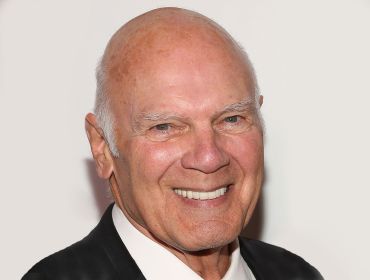A couple of weeks ago, I took a look at how investment sales are performing in Queens. What was evident was that different product types are moving in different directions but that the general trend in the market is reflective of the transitioning and correcting that we see in the broader New York City investment sales marketplace. This week I’d like to examine the Brooklyn submarket.
To review what’s happening in the broader marketplace, thus far in 2016, the dollar volume of sales in New York City is on pace to hit $60 billion, which would reflect a 22 percent reduction from the $77.1 billion that occurred last year. It should be noted that the volume of sales has been decreasing quarter over quarter throughout the first three quarters of this year so we expect the year to finish up below the $60 billion figure that we have seen thus far.
Where does this leave Brooklyn?
It has been clear over the past 10 years or so that Brooklyn has been the hottest of all submarkets citywide. Development in the borough is booming and demand for all types of space (residential, retail and office) has been fantastic. Companies are looking at office space in Brooklyn with a much healthier appetite than ever before and residents in Williamsburg are, in some cases, being priced out of the market and having to move to the Upper East Side of Manhattan. These are conditions that would have been scoffed at if anyone projected them 20 years ago.
Recently, however, the market has been experiencing similar conditions to those we are seeing across the entire city.
The dollar volume of sales in Brooklyn so far this year is on pace for $8.44 billion, which would be a new record, eclipsing last year’s all-time record of $8.4 billion by about 0.5 percent. The number of properties sold, however, is on pace for 1,807, a 12 percent drop from last year’s 2,056 sales. This velocity would also be about 17 percent below the borough’s cyclical peak of 2,173 sales attained in 2014.
Still, property values in Brooklyn are doing extraordinarily well. So far this year, the average price per square foot is $428. This average is 19 percent higher than last year’s $360 per square foot average, which was an all-time record for the borough. Capitalization rates have compressed by another 9 basis points this year, essentially flat at 4.83 percent from last year’s 4.92 percent.
The fact that capitalization rates are essentially unchanged while value is going up so much, on a price per square foot basis, is indicative of higher rents and a higher quality of the properties within the basket of assets sold this year. That higher quality is based upon the tremendous amount of capital that has been deployed into Brooklyn in both the form of property rehabilitation and new construction.
In Kings County, the development market is hurting just like it is elsewhere within the city but, on a relative basis, is not down quite as much as we have seen in other submarkets like Manhattan, for instance. The dollar volume of land sales in Brooklyn is on pace for $1.77 billion, 17 percent lower than last year’s all-time record of $2.12 billion. The number of land sales is expected to reach 209 this year, which would be 32 percent below the 308 development sites which were sold last year. The total size of development sites sold so far this year is on pace for about 6.2 million buildable square feet. This total would be down 15 percent from last year’s 7.3 million buildable feet of sites sold. It is incredible to realize that over the past five years there have been 38.7 million buildable square feet of development sites sold in Brooklyn. Values of the land in Brooklyn have fallen, however, with the 2016 average being $211 per buildable square foot, as compared to 2015’s $237 per buildable square foot, an 11 percent drop.
The office building sales market in Brooklyn is also having a tough time in 2016, on pace for just $37 million of sales, an 88 percent drop from the $306 million of activity last year and a 90 percent drop from the $360 million of such office transactions in 2014. The number of office properties sold is down 53 percent from last year’s 34 transactions, to a pace of just 16 this year. Simultaneously, average price per square foot has dropped 13 percent to $330 per square foot this year versus last year’s average of $379 per foot. Not surprisingly, capitalization rates are up 70 basis points from last year’s 5.65 percent average to roughly 6.35 percent this year.
The multifamily market in Brooklyn is also seeing a reduction in volume with a pace of $2.84 billion and 548 sales, down 17 percent and 14 percent respectively. Average prices per square foot have climbed 14 percent to $370 per square foot while cap rates are essentially flat at an average of 4.59 percent versus 4.61 percent last year.
Retail assets have been the darling of the borough for us in 2016. Dollar volume is on pace for $446 million, up 18 percent from the approximately $380 million last year. The number of retail assets sold is on pace for 120 this year, which would be down about 9 percent from last year’s total; however, the average price per square foot is up approximately 30 percent to an all-time record for Brooklyn retail at an average of $663 per square foot. Not surprisingly capitalization rates have compressed by 46 basis points so far this year to an average of 4.95 percent, a cyclical low for Brooklyn.
So, Brooklyn appears to be performing in concert with the broader market in New York City. And while demand for all property sectors is extraordinarily high, from both tenants and investors, the biggest question for the market is how much of the 38.7 million buildable feet of development sites sold in the past five years will actually get built and what the absorption rate of all of that space will be. Regardless of the answers to those questions, there is no doubt that the strength of the Brooklyn submarket is here to stay and will be a driving force of the health within New York City’s commercial real estate market well into the future.


